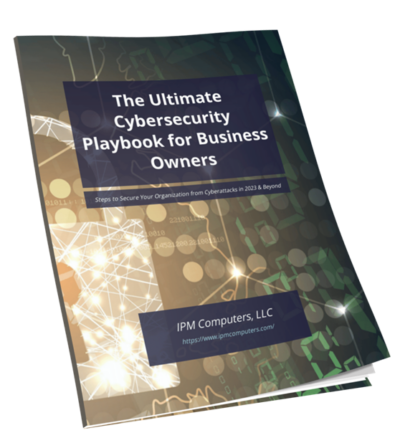The furniture manufacturing industry is facing increasing challenges from cyber threats, with ransomware attacks making headlines by targeting major companies. High-profile incidents like those affecting Bassett Furniture and La-Z-Boy show how attackers take advantage of weaknesses to disrupt operations and demand large ransoms.
Cybersecurity for furniture manufacturers has become a critical focus due to the sector’s reliance on interconnected manufacturing systems and sensitive customer data. These advanced attacks not only stop production lines but also put business continuity and reputation at risk.
Investing in strong furniture manufacturing cybersecurity is more essential than ever when it comes to defending against evolving threats and protect operational integrity.
Understanding Cybersecurity Threats in Furniture Manufacturing
Furniture manufacturers are facing an increasing number of cyber threats, with ransomware attacks and phishing being the most common.
Ransomware is a type of malicious software that encrypts important data, making systems unusable until a ransom is paid.
Phishing, on the other hand, usually involves deceptive emails or messages that trick employees into revealing their login information or downloading malware.
These attacks can have a wide-ranging impact beyond just IT systems. Operational technology (OT), which controls manufacturing machinery, robotics, and supply chain processes, is also becoming a target. If there is disruption in OT, it can lead to production line stoppages, delays in fulfilling orders, and significant financial losses.
Moreover, security breaches affecting OT may also compromise safety protocols and quality control measures.
Why Attackers Target Furniture Manufacturing
There are several reasons why attackers are interested in targeting the furniture manufacturing industry:
- Critical operations: Production schedules heavily depend on having uninterrupted access to both IT and OT systems.
- High ransom payout potential: Manufacturers usually have the resources and urgency to quickly meet ransom demands.
- Complex networks: Hybrid environments with connected office devices and factory equipment create more entry points for attackers.
By understanding these threats, furniture manufacturers can prioritize their defenses to protect not only their corporate data but also the operational backbone of their businesses.
Case Studies Highlighting Cybersecurity Challenges
Bassett Furniture Ransomware Attack
The Bassett Furniture ransomware attack serves as a stark example of how cyber threats can disrupt manufacturing operations. Attackers deployed ransomware that encrypted critical data, forcing Bassett Furniture Industries to temporarily shut down its manufacturing facilities.
Although retail stores and e-commerce platforms remained functional, the inability to access manufacturing systems caused significant delays in order fulfillment and operational setbacks. This incident underscores the vulnerability of production environments and the ripple effect cyberattacks have on supply chains.
La-Z-Boy Data Breach
The La-Z-Boy data breach involved the Trinity ransomware group using advanced double extortion ransomware tactics. This attack combined data exfiltration with encryption, leveraging sophisticated methods such as ChaCha20 encryption to lock down files securely.
Despite La-Z-Boy’s implementation of strong cybersecurity measures like Zero Trust architecture and multi-factor authentication (MFA), attackers exploited weak points related to hybrid work models, shared devices, and unpatched software vulnerabilities. The breach demonstrated that even firms with robust protections remain at risk from persistent and evolving threat actors.
Key Lessons Learned
Key lessons from these cases include:
- The critical importance of securing operational technology alongside IT infrastructure.
- Recognition that advanced encryption methods require equally advanced detection and response capabilities.
- Awareness that hybrid work environments and device sharing increase attack surfaces.
- Necessity for continuous evaluation of security controls to address emerging tactics used in double extortion ransomware campaigns.
Common Vulnerabilities in Furniture Manufacturing Cybersecurity
Furniture manufacturers face specific cybersecurity challenges rooted in evolving work environments and technology use. Hybrid workforce risks have surged as companies adopt flexible work models.
Employees accessing corporate systems from multiple locations and devices increase the attack surface, making it harder to enforce consistent security controls. Shared device security becomes a concern when multiple users access the same hardware without proper session isolation or endpoint protection.
Unpatched software vulnerabilities remain a persistent threat. Many manufacturing firms run legacy systems critical to operations, often lacking timely updates due to compatibility concerns or operational disruption fears. Attackers exploit these gaps through known vulnerabilities, gaining unauthorized access or deploying ransomware payloads. Outdated operating systems, firmware, and applications create entry points for cybercriminals.
Lateral movement within networks is a common tactic used after initial compromise. Attackers escalate privileges by moving sideways through connected systems to access sensitive data or operational technology (OT). Token impersonation techniques amplify this threat by hijacking legitimate credentials to bypass security controls undetected. These methods allow attackers to maintain persistence and expand their foothold inside furniture manufacturers’ IT environments.
Addressing these vulnerabilities requires targeted focus on:
- Enforcing strict policies for remote work and device usage
- Regularly applying patches and updates across all systems
- Monitoring network activity for suspicious lateral movements
- Implementing strong identity verification measures to prevent token misuse
Effective cybersecurity for furniture manufacturers hinges on recognizing these risk factors and proactively closing security gaps before they can be exploited.
Essential Cybersecurity Strategies for Furniture Manufacturers
Implementing effective cybersecurity strategies is critical to defend against evolving threats. Key approaches include:
1. Continuous Monitoring
Constant surveillance of networks and systems enables early detection of suspicious activities. By identifying anomalies or unauthorized access promptly, you can prevent incidents from escalating into full-scale breaches. Tools like Security Information and Event Management (SIEM) systems help aggregate and analyze data in real time.
2. Device Hygiene and Timely Software Updates
Maintaining strict device hygiene means enforcing policies that ensure all devices connecting to your network are secure. This includes regular patching of software vulnerabilities, updating firmware, and removing unnecessary applications. Neglecting updates leaves exploitable gaps attackers can leverage.
3. Network Segmentation
Dividing your network into segments confines potential breaches to isolated areas rather than allowing attackers free rein across the entire infrastructure. For example, separating operational technology (OT) from corporate IT networks limits exposure of critical manufacturing processes to cyberattacks.
4. Behavioral Analytics for Anomaly Detection
Leveraging behavioral analytics tools helps detect unusual patterns in user authentication and activity. These tools use machine learning to establish normal behavior baselines and flag deviations that may indicate compromised credentials or insider threats.
Applying these strategies reduces attack surfaces and strengthens resilience against ransomware, phishing, and other cyber threats specifically targeting furniture manufacturing operations.
Implementing Strong Access Controls and Compliance Measures
Access controls are essential for protecting furniture manufacturing businesses from cyber threats. By implementing multi-factor authentication (MFA), companies can significantly reduce the risk of unauthorized access. MFA requires users to verify their identity through multiple methods, such as a password and a fingerprint scan. This extra layer of security is crucial in preventing credential theft and unauthorized logins, especially in workplaces with a mix of remote and on-site employees.
Zero Trust architecture works hand in hand with MFA by following the principle of “never trust, always verify.” It ensures that users only have access to the resources they need for their jobs, continuously verifies user activity, and separates network resources. This approach minimizes the potential impact of an attacker gaining initial access and makes it harder for them to move laterally within the network.
Regulatory compliance is important for both protecting sensitive data and promoting cybersecurity best practices. Furniture manufacturers who handle payment transactions must comply with PCI DSS, which requires secure handling of cardholder data through encryption, regular vulnerability scans, and strong access controls.
Additionally, the General Data Protection Regulation (GDPR) imposes strict rules on how personal data of EU residents is processed, emphasizing transparency and data protection by design.
Meeting these compliance standards not only helps avoid costly fines but also strengthens your overall cybersecurity defenses by enforcing strict policies and controls. Regulatory frameworks encourage businesses to regularly assess and improve their security measures, ensuring they stay one step ahead of evolving cyber threats.
Incident Response Planning and Breach Remediation for Manufacturing Firms
Developing an incident response plan for manufacturing environments is critical to managing cybersecurity events effectively. Furniture manufacturers face unique challenges due to the integration of operational technology (OT) and information technology (IT) systems. A tailored response plan should address these complexities by:
- Defining clear roles and responsibilities across IT, OT, and management teams.
- Establishing communication protocols that include internal stakeholders, external partners, and law enforcement.
- Creating playbooks for common attack scenarios such as ransomware or phishing.
Transparency during breach remediation is essential to maintain trust with customers, employees, and partners. Promptly communicating what happened, the impact on operations, and steps being taken reassures stakeholders and helps prevent misinformation.
Effective recovery hinges on a structured approach to minimize business disruption:
- Isolate affected systems to contain the breach.
- Eradicate malware or unauthorized access from networks.
- Restore data from verified backups ensuring integrity.
- Conduct root cause analysis to prevent recurrence.
- Update security policies based on lessons learned.
By embedding these practices into cybersecurity for furniture manufacturers, firms can respond swiftly and decisively when incidents occur. This proactive stance reduces downtime and financial losses while preserving reputation in a highly competitive industry.
Proactive Measures to Stay Ahead of Advanced Threats in Furniture Manufacturing Cybersecurity
Threat hunting in furniture manufacturing cybersecurity plays a critical role in uncovering emerging risks that evade traditional detection methods. Instead of waiting for alerts, threat hunting involves actively searching through networks and systems to identify hidden threats before they can cause damage.
This proactive stance helps manufacturers detect sophisticated attacks early, reducing potential operational downtime and financial losses.
Sharing intelligence across industries enhances defense strategies by providing insights into new attack techniques and vulnerabilities. Collaborative platforms enable furniture manufacturers to learn from incidents faced by other sectors, equipping them with actionable information to strengthen their own security posture. This exchange of threat intelligence fosters a community defense mindset, making it harder for attackers to succeed.
Frameworks like MITRE ATT&CK offer a structured approach to understanding attacker tactics, techniques, and procedures (TTPs). By mapping observed behaviors against this comprehensive knowledge base, cybersecurity teams can anticipate attacker moves and design targeted defenses. Employing MITRE ATT&CK allows manufacturers to prioritize security investments on the most relevant threats and streamline incident response efforts.
Key proactive measures include:
- Establishing dedicated threat hunting teams focused on manufacturing-specific attack vectors.
- Participating in industry-wide intelligence sharing initiatives.
- Integrating MITRE ATT&CK into security operations for continuous improvement.
These steps empower furniture manufacturers to maintain resilience against increasingly advanced cyber adversaries.
Conclusion
Building resilience against cyber threats requires a layered defense approach that integrates:
- Advanced technology to detect and block attacks
- Robust processes ensuring consistent security practices
- Comprehensive training to equip employees with threat awareness
This combination strengthens your cybersecurity posture, making it harder for attackers to exploit vulnerabilities.
You don’t have to face these challenges alone. Contact IPM Computers for expert cybersecurity services tailored specifically to the furniture manufacturing industry. Our deep understanding of manufacturing environments and threat landscapes ensures your defenses remain strong and adaptive against evolving cyberattacks.
Take proactive steps today. Protect your business with proven cybersecurity strategies designed for furniture manufacturers.





